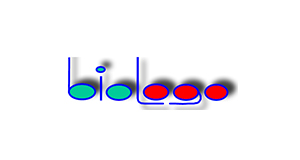Cytokeratin 14
Cytokeratin 14, IgG3, Clone: LL002
Artikelnummer
BILCK114
Verpackungseinheit
1 ml
Hersteller
BioLogo
Verfügbarkeit:
wird geladen...
Preis wird geladen...
Clone: LL002
Background: Cytokeratin 14 (CK14) belongs to the acid subfamily of CKs (Type I) and is characteristic of stratifying epithelia (trachea, bronchi, cervix, epidermis, sweat glands). The antibody to CK14 is helpful to distinguish between stratifying epithelia and simple epithelia, which don't express this type of cytokeratins. Tumours of squamous cell origin will be stained with this antibody. Cytokeratins are a group of water-insoluble filamentous proteins. They are constituents of the cytoskeleton of epidermal cells and other epithelial cells. Up to now 20 different cytokeratins have been characterised by gel electrophoresis. They have been subdivided into a basic and an acid subfamily. Most frequently the nomenclature according to Moll et al. (1982) is used. Human cytokeratin 14.
Positive Control: Bronchial epithelium
Immunogen: C-terminal 15-AA peptide of cytokeratin 14 conjugated to thyroglobulin
Purification Method: Antibody solution in stabilizing phosphate buffer pH 7.3. Contains 0.09 % sodium azide**. The volume is sufficient for at least 100 immunohistochemical tests (100 µl working solution / test). Use appropriate antibody diluent e.g. BIOLOGO Art. No. PU002, if further dilution is required.
Concentration: 40 µg/ml
References: 1. Moll R., Franke W.W., Schiller D.L., Geiger B., and Krepler R. (1982) The Catalog of Human Cytokeratins: Patterns of Expression in Normal Epithelia, Tumors and Cultured Cells. Cell 31; 11 ff. 2. Sun T.-T. Tseng S.C.G., Huang A.J.W., Cooper D., Lynch M.H., Weiss R., Eichner R., and Schermer (1985) Monoclonal antibody studies of keratin expression: A review. In: Intermediate Filaments , Wang E. et al. eds. N.Y. Acad. Sci. 455, pp 307 ff. 3. Harnden P. and Southgate J. (1997) Cytokeratin 14 as a marker of squamous differentiation in transitional cell carcinomas. J Clin Pathol. 50(12):1032-1033. 4. Sarbia M, Verreet P, Bittinger F, Dutkowski P, Heep H, Willers R, Gabbert HE. (1997) Basaloid squamous cell carcinoma of the esophagus: diagnosis and prognosis. Cancer 79(10):1871-1878. 5. Lakhani S.R., O'Hare M.J., Monaghan P., Winehouse J., Gazet J.C., Sloane J.P. (1995) Malignant myoepithelioma (myoepithelial carcinoma) of the breast: a detailed cytokeratin study. J. Clin. Pathol. 48(2):164-167.
UniProt: P02533
Caution: *These antibodies are intended for in vitro research use only. They must not be used for clinical diagnostics and not for in vivo experiments in humans or animals. ** The preservative sodium azide is known to be poisonous and potentially hazardous to health. It should be handled only by trained staff. Despite of the product's low azide concentration it must be handled with care. Dispose according to regional rules!
Background: Cytokeratin 14 (CK14) belongs to the acid subfamily of CKs (Type I) and is characteristic of stratifying epithelia (trachea, bronchi, cervix, epidermis, sweat glands). The antibody to CK14 is helpful to distinguish between stratifying epithelia and simple epithelia, which don't express this type of cytokeratins. Tumours of squamous cell origin will be stained with this antibody. Cytokeratins are a group of water-insoluble filamentous proteins. They are constituents of the cytoskeleton of epidermal cells and other epithelial cells. Up to now 20 different cytokeratins have been characterised by gel electrophoresis. They have been subdivided into a basic and an acid subfamily. Most frequently the nomenclature according to Moll et al. (1982) is used. Human cytokeratin 14.
Positive Control: Bronchial epithelium
Immunogen: C-terminal 15-AA peptide of cytokeratin 14 conjugated to thyroglobulin
Purification Method: Antibody solution in stabilizing phosphate buffer pH 7.3. Contains 0.09 % sodium azide**. The volume is sufficient for at least 100 immunohistochemical tests (100 µl working solution / test). Use appropriate antibody diluent e.g. BIOLOGO Art. No. PU002, if further dilution is required.
Concentration: 40 µg/ml
References: 1. Moll R., Franke W.W., Schiller D.L., Geiger B., and Krepler R. (1982) The Catalog of Human Cytokeratins: Patterns of Expression in Normal Epithelia, Tumors and Cultured Cells. Cell 31; 11 ff. 2. Sun T.-T. Tseng S.C.G., Huang A.J.W., Cooper D., Lynch M.H., Weiss R., Eichner R., and Schermer (1985) Monoclonal antibody studies of keratin expression: A review. In: Intermediate Filaments , Wang E. et al. eds. N.Y. Acad. Sci. 455, pp 307 ff. 3. Harnden P. and Southgate J. (1997) Cytokeratin 14 as a marker of squamous differentiation in transitional cell carcinomas. J Clin Pathol. 50(12):1032-1033. 4. Sarbia M, Verreet P, Bittinger F, Dutkowski P, Heep H, Willers R, Gabbert HE. (1997) Basaloid squamous cell carcinoma of the esophagus: diagnosis and prognosis. Cancer 79(10):1871-1878. 5. Lakhani S.R., O'Hare M.J., Monaghan P., Winehouse J., Gazet J.C., Sloane J.P. (1995) Malignant myoepithelioma (myoepithelial carcinoma) of the breast: a detailed cytokeratin study. J. Clin. Pathol. 48(2):164-167.
UniProt: P02533
Caution: *These antibodies are intended for in vitro research use only. They must not be used for clinical diagnostics and not for in vivo experiments in humans or animals. ** The preservative sodium azide is known to be poisonous and potentially hazardous to health. It should be handled only by trained staff. Despite of the product's low azide concentration it must be handled with care. Dispose according to regional rules!
| Artikelnummer | BILCK114 |
|---|---|
| Hersteller | BioLogo |
| Hersteller Artikelnummer | CK114 |
| Verpackungseinheit | 1 ml |
| Mengeneinheit | STK |
| Reaktivität | Human |
| Klonalität | Monoclonal |
| Methode | Immunohistochemistry (frozen), Immunohistochemistry (paraffin) |
| Isotyp | IgG3 |
| Wirt | Mouse |
| Produktinformation (PDF) | Download |
| MSDS (PDF) | Download |

 English
English







